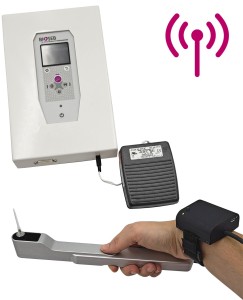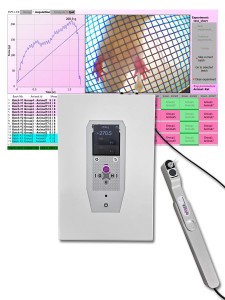Authors
E. Redondo-Castro, G. García-Alías and X. Navarro
Lab
Centro de Investigación Biomédica en Red sobre Enfermedades Neurodegenerativas (CIBERNED), Universitat Autònoma de Barcelona, Bellaterra, Spain
Journal
Restorative Neurology and Neuroscience
Abstract
Purpose: Spinal cord injuries (SCI) cause motor, sensory and autonomic dysfunctions as well as neuropathic pain. We investigated plastic changes occurring in cord segments caudal to the lesion to assess their potential contribution to pain states after SCI. Methods: Different thoracic SCIs were performed in adult rats. Functional and algesimetry tests were performed along 3 months. Several elements of the spinal nociceptive circuitry were assessed by immunohistochemical analyses of lumbar segments. Results: Injured animals manifested mechanical and thermal hyperalgesia. Wind-up responses and spinal reflexes were enhanced, indicating spinal hyperexcitability. We found an increase in density of nociceptive sensory afferences and in GABA inhibitory activity in dorsal horns, and increased glial reactivity. Serotoninergic descending fibers and contacts on ventral horn motoneurons were reduced. Motoneurons presented more abundant inhibitory inputs, identified by gephyrin. Not all the changes kept direct relationship to the severity of the injury. Conclusion: The existence of hyperalgesia despite the boost of inhibitory elements in the spinal cord confirms the dysbalance between excitatory and inhibitory mechanisms, leading to a general disinhibition. Widespread dysfunctions in remote segments after central injuries contribute to the appearance of pain, and they may be new targets for therapies aimed to modulate spinal dysfunctions after injury.
BIOSEB Instruments Used
Electronic Von Frey 4 (BIO-EVF4),Electronic Von Frey 5 with embedded camera (BIO-EVF5)
Source :

 Pain - Thermal Allodynia / Hyperalgesia
Pain - Thermal Allodynia / Hyperalgesia Pain - Spontaneous Pain - Postural Deficit
Pain - Spontaneous Pain - Postural Deficit Pain - Mechanical Allodynia / Hyperalgesia
Pain - Mechanical Allodynia / Hyperalgesia Learning/Memory - Attention - Addiction
Learning/Memory - Attention - Addiction Physiology & Respiratory Research
Physiology & Respiratory Research











![Dynamic Weight Bearing 2.0 – Postural Module [Add-on]](https://bioseb.com/733-home_default/dynamic-weight-bearing-20-add-on-postural-module.jpg)
























 Pain
Pain Central Nervous System (CNS)
Central Nervous System (CNS) Neurodegeneration
Neurodegeneration Sensory system
Sensory system Motor control
Motor control Mood Disorders
Mood Disorders Other disorders
Other disorders Muscular system
Muscular system Joints
Joints Metabolism
Metabolism Cross-disciplinary subjects
Cross-disciplinary subjects CONFERENCES & MEETINGS
CONFERENCES & MEETINGS 
